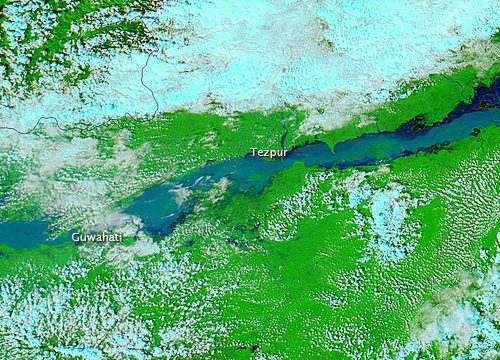Hong Kong-based South China Morning Post had reported that more than 1000 Chinese engineers were testing techniques that could be used to build the tunnel, the world’s longest.
China has denied as “false” a news report that it plans to build a 1,000-km tunnel to divert water from the Brahmaputra river at a site close to the India border to arid Xinjiang in the country’s northwest.
Hong Kong-based South China Morning Post had reported on October 2017 that more than 100 Chinese engineers were involved in testing techniques that could be used to build the tunnel, which would be the world’s longest.
“This is a false report,” foreign ministry spokesperson Hua Chunying told a regular ministry briefing when she was asked about the report.
“China will continue to attach great importance to cross-border river cooperation,” she added.
The matter was widely reported by the Indian media because of the possible impact such a project would have on India’s northeastern states.
The South China Morning Post had quoted Chinese scientists working on the reported plan as saying that though it was a massive project, it was only a matter of time before it would be implemented.
The Tsangpo flows from China into India through Arunachal Pradesh as the Siang before becoming the Brahmaputra in Assam – the source of life and livelihood for millions.
The tunnel project, submitted to the government in March, was reported to be in the blueprint stage but could trigger a serious water crisis in India’s northeast if it is implemented as the Tsangpo is an upper riparian river.
The media report said water would be diverted from Yarlung Tsangpo river in southern Tibet to Taklimakan desert in Xinjiang.
Zhang Chuanqing, a researcher at the Institute of Rock and Soil Mechanics in the Chinese Academy of Sciences in Wuhan, Hubei province, told the newspaper he was confident the tunnel project would take off despite enormous costs, engineering challenges, environmental impact and protests by neighbours.
Chinese experts were confident that the project would be difficult to resist with the availability of technology in the years to come and potential benefits.
“With new water from Tibet, Xinjiang would boom like California,” Zhang said, adding China was “now taking a quiet, step-by-step approach to bring it to life”.
Between the Indus, which originates in the west of the Tibet plateau, and the Tsangpo-Siang in the east, there are six major rivers flowing from Tibet to India.
These rivers are crucial for India’s agricultural and industrial needs.
As of 2016, China had plans to build 32 dams on the rivers and tributaries, raising concerns among people in lower riparian states.
In 2015, for example, China operationalised the largest dam in the Tibet Autonomous Region in the middle reaches of the river.
“Located in the Gyaca County, Shannan Prefecture, the Zam hydropower station harnesses the rich water resources of the Yarlung Tsangbo River, a major river which flows through Tibet,” official Xinhua news agency had reported at the time.
First Published: Oct 31, 2017



